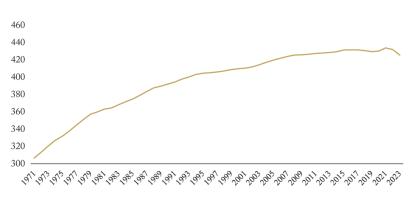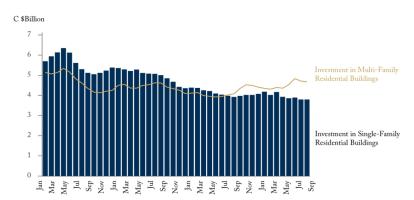In this edition of Graphic Intelligence, we graph the provincial Old Age Ratio trends from 1992 to 2015. This Old Age Ratio is the number of elderly – those aged 65 and above – who are not in the labour force, relative to the working-age population – those aged 15-64. Move the cursor at the bottom to specify your preferred time range or hover over a specific data point to display the Old Age Ratio at that point. You can also select a province on the right-hand side to highlight it in the graph. We observe that the Old Age Ratio has steadily increased, on balance, over the period under analysis across all provinces except for Saskatchewan, while Quebec and the Atlantic provinces have experienced particularly large increases.
This begs the question: what is the impact of shifting demographics on Canada’s monetary policy?
Our recent study finds that Canada’s aging population has acted as a drag on monetary policy effectiveness in Canada, and is likely a leading cause of the systematic undershooting of inflation since the 2008 financial crisis. An older population takes on less debt, and as a result is less sensitive to changes in the interest rate.
To learn more about demographics and their impact on Canadian monetary policy, read “Faulty Transmissions: How Demographics Affect Monetary Policy in Canada” by Steve Ambler and Jeremy Kronick.




